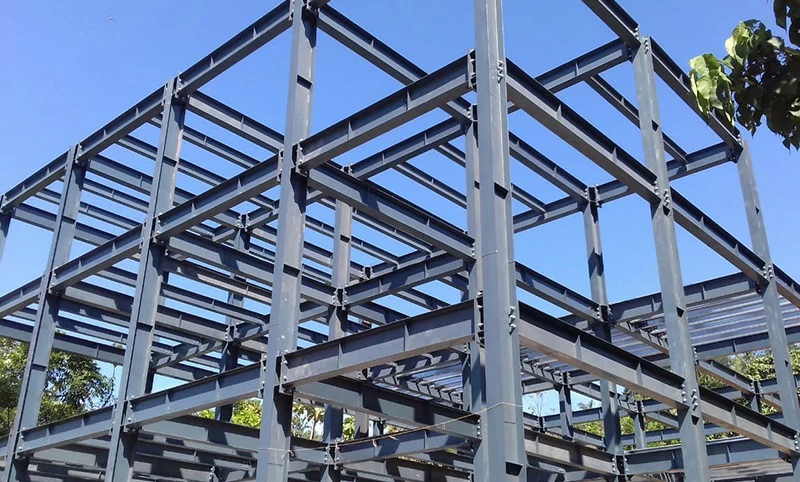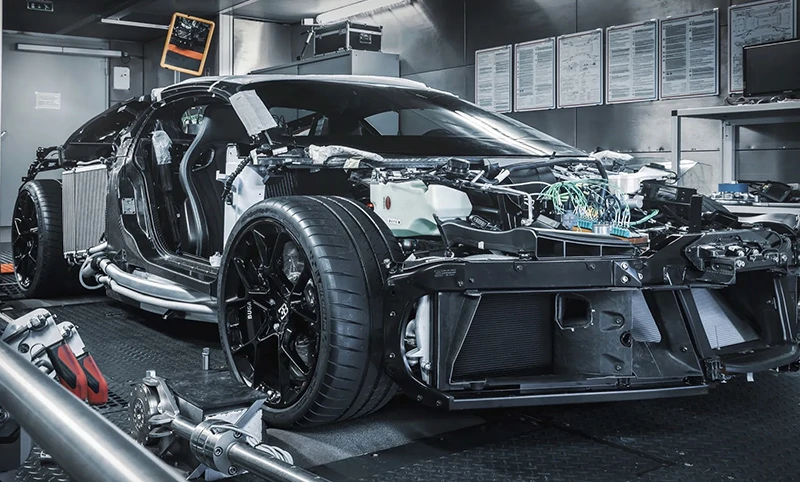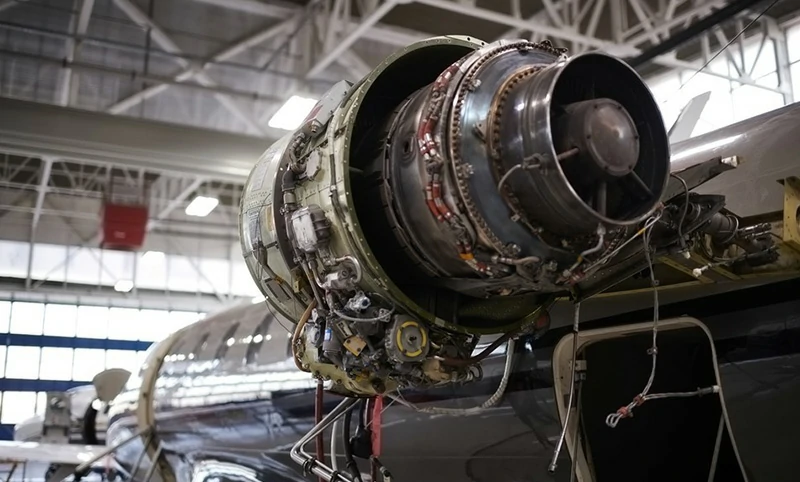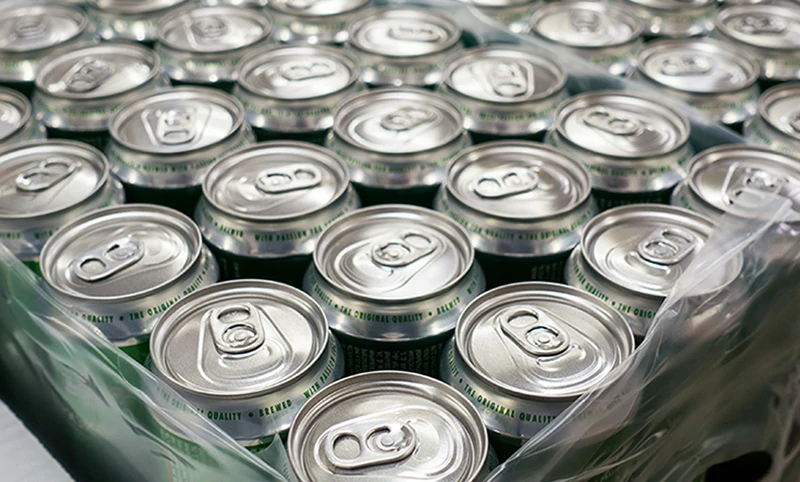Aluminum and steel are among the most commonly used metals in manufacturing and construction. From aircraft fuselage panels and car frames to nuts, bolts, and washers in building structures, countless items are made from these metals. Although they may appear somewhat similar, aluminum and steel each have unique characteristics and are distinctly different metals.
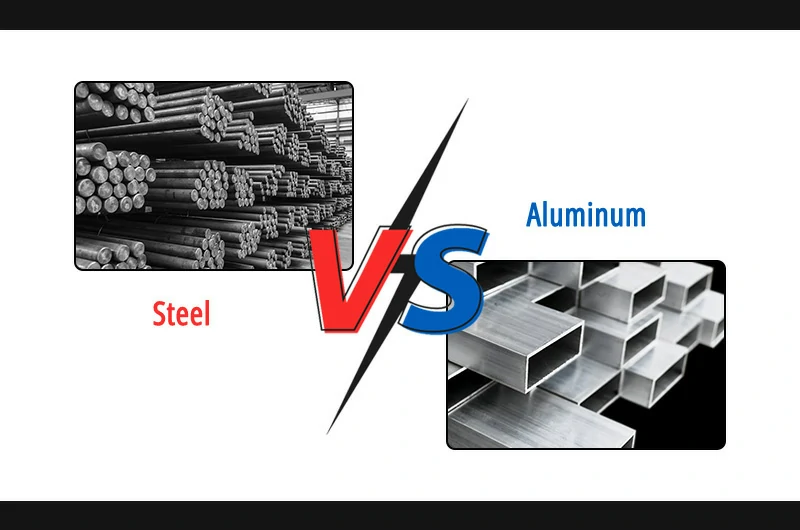
Aluminum vs steel weight
Aluminum is known for its lightweight properties, with a density of about 2.7 g/cm³, compared to steel's density of about 7.85 g/cm³. Generally, steel is 2.5 times denser than aluminum, meaning steel is much heavier than aluminum for the same volume. This weight difference is primarily due to the higher carbon content in steel, which is directly related to its weight.
Due to aluminum's lightweight characteristics, many applications have shifted from steel to aluminum alloys, such as in automotive and high-speed rail car bodies. Aluminum alloys significantly reduce overall weight, improving fuel efficiency, handling performance, and energy efficiency, while also lowering maintenance and operational costs.
Aluminum vs steel strength
Steel outperforms aluminum in terms of absolute strength, with tensile strength typically ranging from 400 to 800 MPa, making it suitable for applications that need to bear heavy loads. However, the higher density of steel results in heavier structural components.
In contrast, aluminum has a tensile strength generally ranging from 90 to 550 MPa. While its strength is lower than that of steel, its lightweight properties offer a better strength-to-weight ratio. Aluminum excels in applications where weight reduction is crucial, such as in the aerospace and new energy vehicle industries.
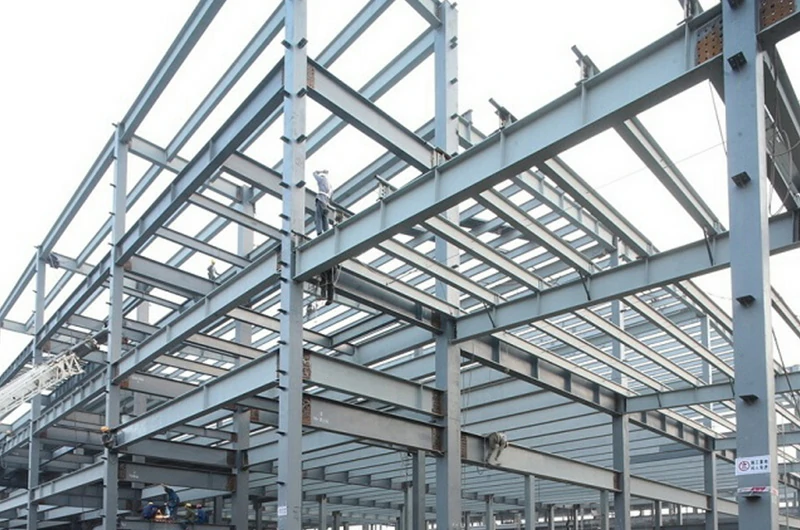
Aluminum vs steel corrosion resistance
In terms of corrosion resistance, aluminum is the clear winner. Its exceptional corrosion resistance is due to a naturally formed oxide layer on its surface, which can be further enhanced with surface treatments such as anodizing, powder coating, or chemical cleaning.
In contrast, steel is prone to corrosion, especially carbon steel, which requires protective coatings or other treatments to prevent rust and corrosion, particularly in humid or abrasive environments. However, there are certain types of rust-resistant steel known as stainless steel, which typically contain alloy metals like chromium to prevent corrosion, though they come at a higher cost..
Aluminum vs steel heat resistance
Aluminum has a lower melting point, around 660°C, making it unsuitable for high-temperature applications. Although aluminum has high thermal conductivity, its heat resistance is limited by its low melting point.
Steel has a higher melting point, typically between 1370°C and 1510°C, making it suitable for high-temperature applications.
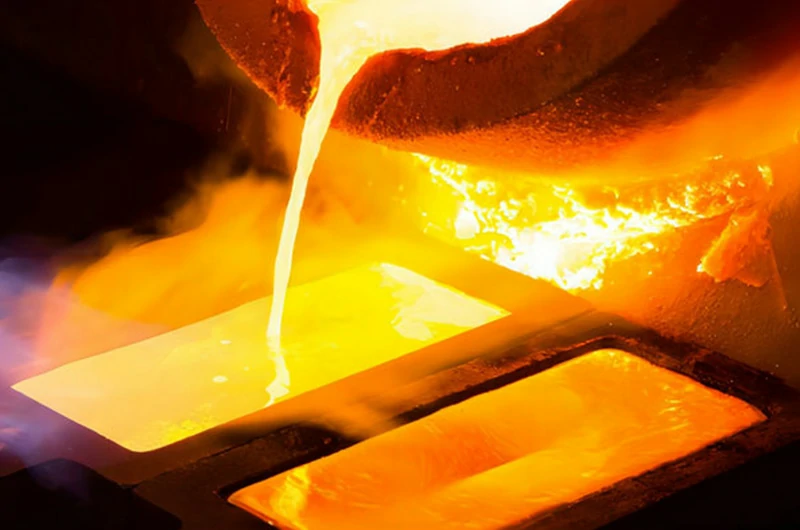
Thermal conductivity
Aluminum has a high thermal conductivity of about 235 W/(m·K), allowing it to efficiently conduct heat, making it suitable for applications requiring effective heat dissipation, such as radiators and electronic heat sinks.
Steel has lower thermal conductivity, typically in the range of 50-60 W/(m·K), making it suitable for applications with lower thermal conductivity requirements, such as boilers and structural supports in construction.
Ductility
Aluminum is known for its malleability and ease of machining, making it ideal for manufacturing intricate and detailed structures, particularly for projects requiring precision and complex designs.
Steel, while less malleable, is valued for its toughness and elasticity. It maintains its shape better under pressure but is harder to shape into complex forms without special processing.
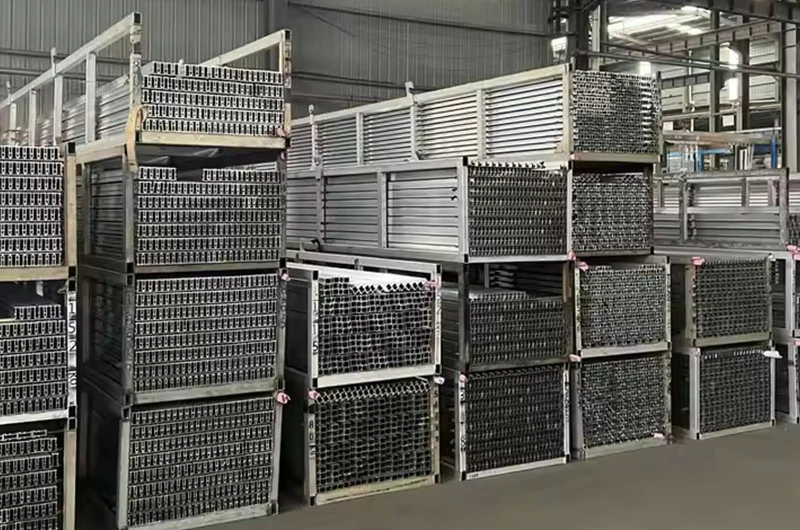
Recyclability
Both aluminum and steel have high recyclability. Steel is the most recycled material globally, with a recycling rate exceeding 85% in North America. Aluminum also boasts a high recycling rate and retains its properties during recycling, allowing it to be recycled indefinitely without losing quality.
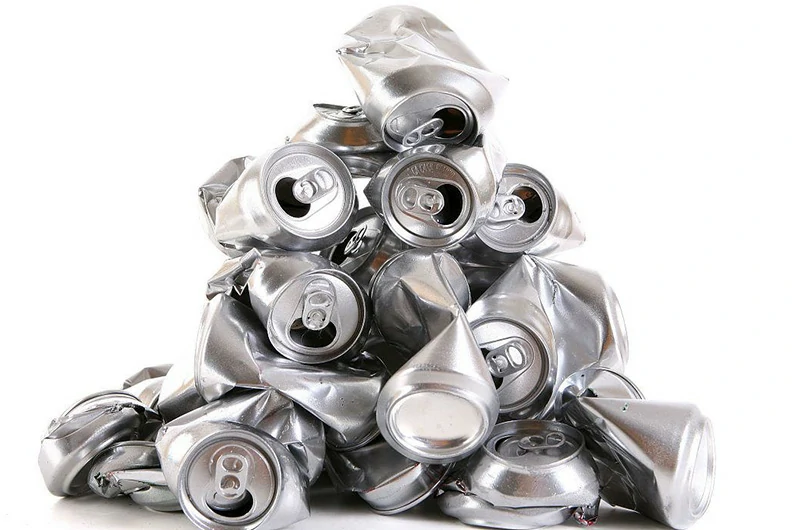
Environmental impact
Production impact: Both aluminum and steel production processes are energy-intensive, impacting the environment. Aluminum production requires significant electricity to convert bauxite into aluminum. In contrast, steel production typically uses coal, contributing to higher carbon dioxide emissions.
Usage stage impact: Depending on the application, using lighter materials like aluminum can significantly reduce energy consumption. For example, in transportation, using aluminum can reduce vehicle weight, leading to substantial fuel savings and decreased emissions over the vehicle's lifespan.
Costs
Although strength and weight are fundamental considerations when selecting materials, cost is often a decisive factor. While aluminum and steel prices fluctuate with market conditions, steel is generally cheaper than aluminum.
- Raw material costs: The raw material cost for steel is typically lower than for aluminum. Steel is primarily made from iron, which is abundant and cheaper than bauxite, the ore used to produce aluminum.
- Processing costs: The processing costs for the two metals vary significantly. Aluminum requires substantial energy to be extracted from ore, increasing its overall cost. On the other hand, while steel also requires a lot of energy, advances in steelmaking technology have reduced these costs over time.
- Lifecycle costs: Lifecycle costs should also be considered. For example, aluminum's higher corrosion resistance can reduce long-term maintenance costs. Additionally, aluminum is easier to recycle than steel, which can further impact its lifecycle costs.
Application
- Construction: In the construction industry, steel's superior strength makes it the preferred material for structural components such as beams, columns, and girders. Its high tensile, compressive, and yield strength ensures buildings and bridges can withstand heavy loads and harsh weather conditions without significant deformation or damage.
- Automotive: Despite steel's strength, the automotive industry has recently shifted towards aluminum. Aluminum's strength-to-weight ratio makes it a more efficient choice, reducing vehicle weight and improving fuel efficiency.
- Aerospace: In aerospace, balancing strength and weight is crucial, so aluminum is favored for aircraft fuselages. However, steel is used for parts like engines and landing gear due to its higher strength and heat resistance.
- Packaging: For packaging, such as soda cans, aluminum is often preferred. Although aluminum's strength may not match steel, it provides sufficient strength for such applications, with the added benefits of being lighter and more corrosion-resistant.
Future trends and innovations
Lightweighting: In automotive and aerospace industries, the trend towards lightweighting is evident. Aluminum, with its lower density, improves fuel efficiency and reduces emissions. However, innovations in steel, such as advanced high-strength steel (AHSS), are also crucial for lightweighting efforts.
Sustainability: Both aluminum and steel are recyclable, but future innovations may focus on reducing the environmental impact of production processes, such as exploring hydrogen-based steel production to lower carbon emissions.
New material development: New materials like carbon fiber and composites, known for their superior strength-to-weight ratios, are increasingly replacing traditional aluminum and steel in various applications.
Digital manufacturing: Technologies like 3D printing enable more complex designs and improved material efficiency, potentially shifting the balance of aluminum and steel usage in certain applications.
What can Mastar help you?
Demand analysis: Mastar's experts will work with you to analyze project requirements, including load demands, environmental conditions, and budget constraints, to determine the most suitable material type.
Performance evaluation: Based on your project's specific needs, Mastar provides detailed material performance comparisons, including strength, corrosion resistance, and heat resistance, to help you select the best steel or aluminum alloy.
Cost-benefit analysis: Mastar will assess the cost-effectiveness of different materials, including initial investment and long-term maintenance costs, to ensure your project stays within budget while achieving optimal performance.
Supply chain support: Mastar offers customized solutions and timely supply of steel and aluminum alloys, ensuring you receive the appropriate materials for your project and on-time delivery.
Technical consulting: Mastar's technical team provides in-depth advice on material selection, including construction methods, surface treatments, and durability, to help you make informed decisions.


